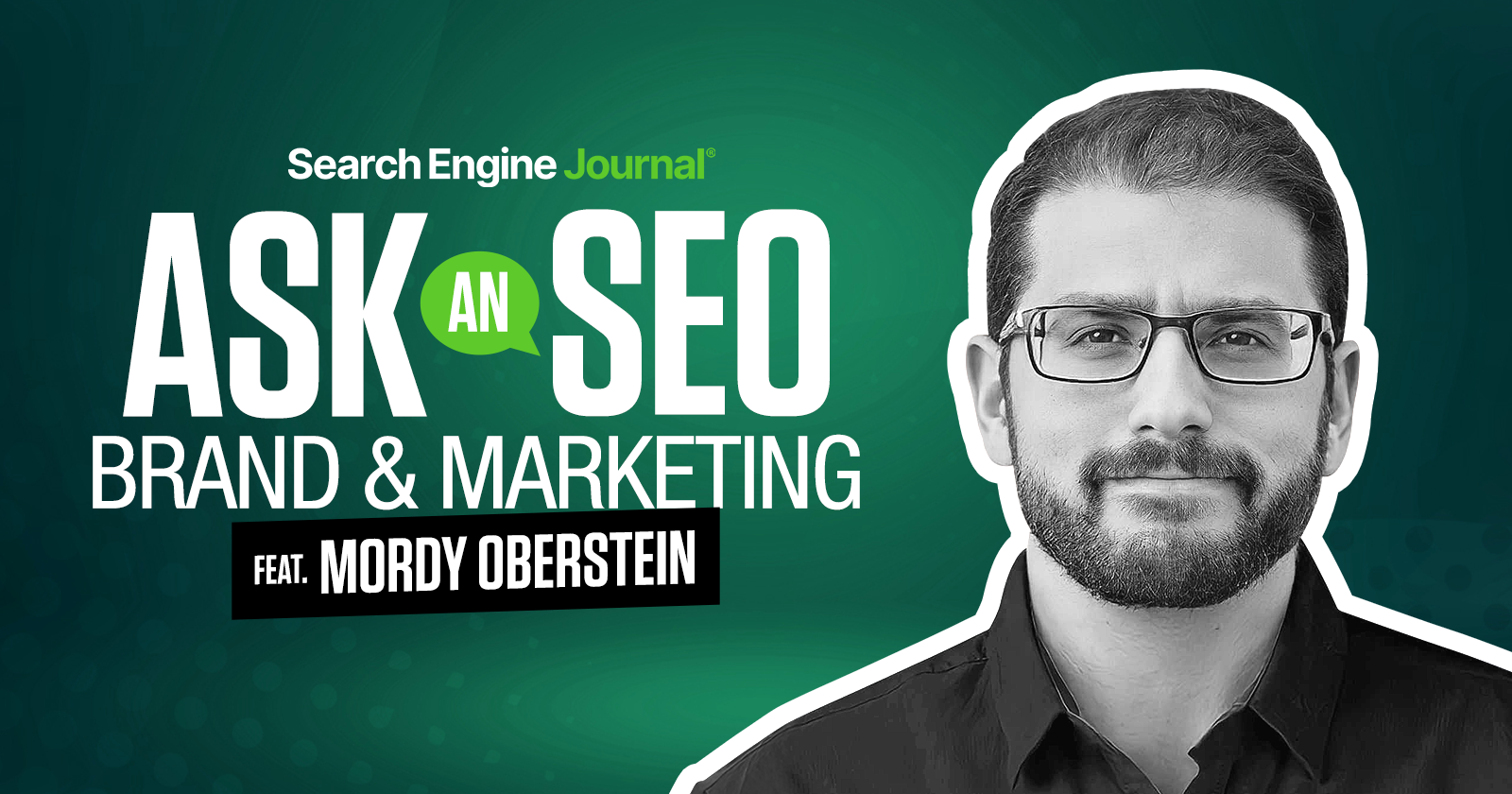In this edition of Ask An SEO, a marketing leader reaches out with a question:
My company put pressure on me to deliver results of more traffic to our product pages.
How can I try to convince the CMO that we should invest more in brand building that will most likely reduce traffic?
There’s so much to chew on with this question. Before I get into the thick of it, I want to challenge the premise: “brand building that will most likely reduce traffic.”
It’s something I hear from clients often enough. It’s a premise I hear from SEOs all the time. While it may be true in this specific case, I would like to say something regardless.
I’m glad brand has entered into the SEO conversation. Long overdue.
At the same time, brand hasn’t been the forte of the search marketing industry. As a result, there’s a lot being said that, when put under scrutiny, doesn’t hold up.
I’d take a lot of the brand strategy you’re hearing from the SEO industry with a grain of salt.
Just because you target an audience doesn’t mean you lose wider reach. It can happen – and very often it should happen – but does it not have to happen?
You can speak to a core audience very deeply while not losing the attention of your secondary audience. Streaming platforms do this all the time.
Apple TV has an identity around great sci-fi content, but it also speaks to a wider audience as it throws some solid comedies into the mix (at least in my opinion).
Both of these “identities” work because there is a common thread: Apple puts out higher-quality content than other platforms.
So, will you lose traffic by focusing on brand? You probably should, but that’s only because I’ve been around the proverbial SEO block a few times.
It is, however, entirely possible to do things like pivot to a new audience while retaining the old one.
Losing audience as a result of building the brand is 100% not an inherent outcome. If anything, in the long term, it’s the total opposite. Brand building is all about connecting with more audiences over time.
Let’s move on to your question and work with the premise that you will lose traffic by increasing content and audience targeting.
I’m not even going to go into the obvious point and glaring absurdity of not wanting to have a more specific focus and more refined audience targeting in favor of “traffic.”
So, we’re going to work with two premises:
- You will lose traffic by focusing on brand.
- Not getting that “traffic” is “bad” somehow.
How do you sell this to the CMO?
For The Conceptual CMO
I’m going to start at a very conceptual level that will probably not speak to your CMO, but is very important for you to understand when you make your pitch.
The web is not the web you think it is. The web was a place where Wired could write about coffee mugs and rank them because everything was on an equal footing.
It was one giant “web” that was unified, where anyone could rank for anything so long as the content was halfway decent.
That web doesn’t exist anymore.
There is no “internet.” There is the internet that talks about home goods. There is the internet that deals with technology products. There is the internet that takes up sports.
On this internet, Wired isn’t relevant for coffee mugs. That’s not its sphere of influence. The web is no longer one giant unified void that algorithms sift through to pick up whatever site on whatever topics.
Think of the internet as independent spheres that sometimes move and overlap with other orbits but are generally self-contained.
If you’re selling this bowl of goods to a CMO, I would pitch it as you’re getting ahead of the curve. You’re getting ahead of the traffic loss that has already hit so many sites and is going to hit yours eventually.
I would sell this as “being able to perform as the landscape shifts.” You have to function in alignment with the ecosystem. There’s no way around it.
If you don’t, it will all hit the fan. It’s only a question of “when.” Usually, brands will wait until it’s already too late.
Not operating within the confines of the ecosystem is like trying to row a boat on an ice skating rink using a tennis racket.
For The Pragmatic CMO
The conceptual construct I just defined above will not speak to most CMOs.
While it’s extremely likely that you, the VP of marketing, head of growth, marketing manager, etc., understand this point, most CMOs are not in touch with the ecosystem enough to be swayed by this argument.
For most CMOs, I would start with the competition. Show similar sites that have undergone traffic losses because they haven’t changed with the tides.
If you’re a HubSpot competitor, showcase all the traffic HubSpot lost. And then, translate that into all the dollars spent in time and resources trying to capture traffic, as if it were 2015.
 Image from author, April 2025
Image from author, April 2025Honing your audience makes it less expensive to run marketing campaigns and assets.
Don’t pay to speak to everyone. Pay to speak to the right ones.
If your marketing strategy is aimed at casting a wide net, you will inevitably either pay for content production that isn’t of value or simply pay for pure visibility that isn’t worth the value.
You can also do the opposite. You can show competitors who have gotten ahead of the curve. That usually lights a fire under most CMOs. Seeing that the competition is getting “ahead” in whatever way is very uncomfortable for the C-level staff.
If you can show that your strategy is already being implemented by competitors, squeeze. And frame it. Frame it well: “Our competitors are starting to speak more directly to our ultimate target audience, and you can see that here, here, and here.” That will have an impact that they won’t ignore.
You have to try to concretize this as much as possible.
The problem with brand, as Alli Berry once put it to me, is that it’s the silent killer. I have witnessed this firsthand on more than one occasion with clients.
You don’t realize it’s the decline of brand efficacy until you have a real problem on your hands.
What happens is, time and time again, the decline of brand efficacy first manifests itself in whatever performance channel.
Suddenly, your social media performance or organic search performance is on the decline.
The immediate knee-jerk reaction brands have (especially as you move up the ladder) is to fix the channel.
These are the meetings where you are told to change things up and fix performance. You know, the meetings where you leave with your head shaking since it’s clear no one knows what they’re talking about.
The reason this happens is that the issue isn’t the channel. There’s nothing wrong with the social or SEO strategy per se. Rather, there’s a huge gap in the brand strategy, and it’s starting to have an impact.
The “suddenness” of a performance problem can be an external shift (a change in consumer behavior, for example) – and that definitely can and does happen.
However, from my experience, the usual culprit is the loss of brand traction.
Often, a product hits the market at the right time, in the right way, in the right place. The stars align and the brand takes off.
At a certain point, the brand hits what I tell my clients is a “maturity inflection point.” The brand can no longer ride the momentum of its product or service the same way, and brand efficacy (and marketing potency) ebbs away.
By the time this happens, most brands have a strong client base, etc., so they never look internally. Instead, they focus on the specific performance problems. Thus, the brand becomes the silent killer.
Your job is not to let this happen to you. If you’re managing a marketing team at whatever level, your job is to nip this problem in the bud.
Now, if your CMO is more reflective and so forth, then the argument I gave earlier might work.
This is not the norm, so you need to concretize the argument.
Whether it be, as I mentioned, through the competitor angle or whatever, you have to gain some perspective and then translate that perspective into practicality.
Roll With Your CMO
My last piece of advice is to know your audience. CMOs are often bold and brash (likely because they feel they have to be), so speak that language. Come with a plan that has a bit of edge and flair to it.
If that’s not your CMO, don’t. If they are more analytical by nature, show the data.
It’s just a matter of knowing your audience and what language they speak. You have to roll with where your CMO and company overall are at. Otherwise, you might have the greatest plan, but it won’t land.
More Resources:
- CMO Vs. SEO: How To Balance SEO And B2B Marketing Goals
- Getting C-Level Buy-In For SEO Initiatives
- 5 Key Enterprise SEO Priorities CMOs Need To Get Right
Featured Image: Paulo Bobita/Search Engine Journal





![We Figured Out How AI Overviews Work [& Built A Tool To Prove It]](https://www.searchenginejournal.com/wp-content/uploads/2025/04/sidebar1x-185.png)